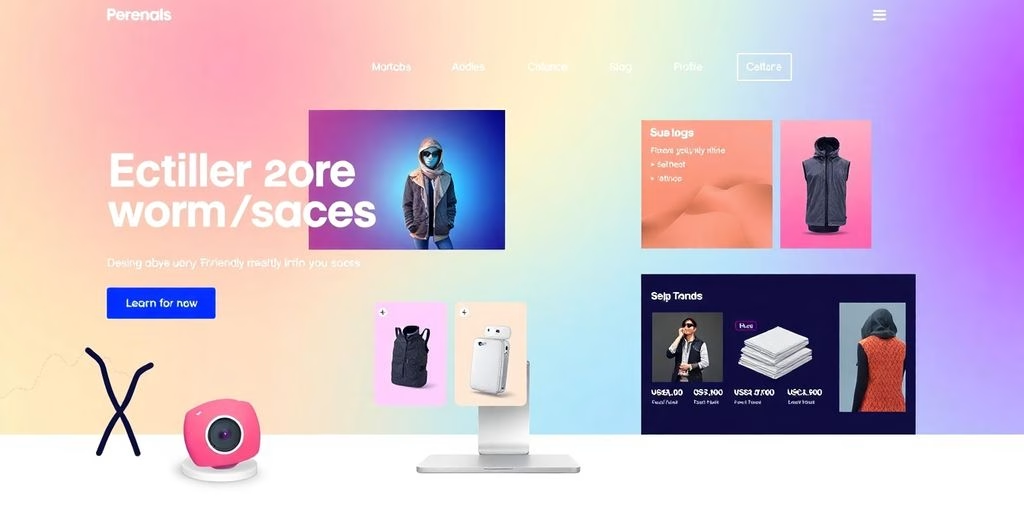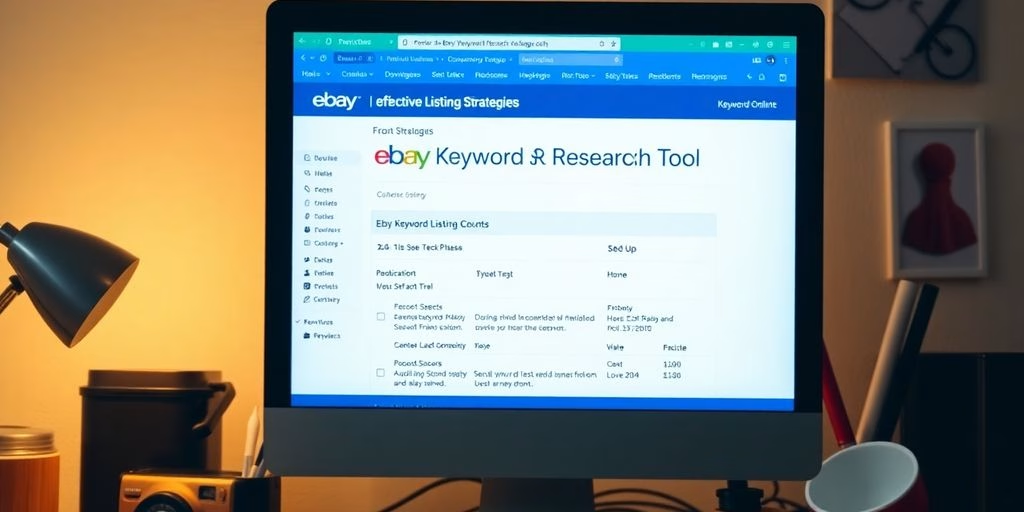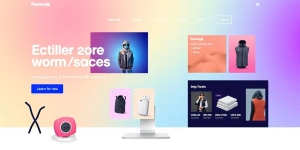Pembuatan prototipe adalah langkah penting dalam pengembangan perangkat lunak yang memungkinkan tim memvisualisasikan dan menguji ide-ide mereka sebelum produksi skala penuh. Dengan membuat prototipe, pengembang dapat mengidentifikasi masalah, mengumpulkan umpan balik dari pengguna, dan menyempurnakan desain mereka, yang pada akhirnya menghasilkan produk yang lebih baik. Artikel ini membahas konsep prototipe, fungsinya, dan manfaat prototipe yang dibawa ke dalam proses pengembangan.
Daftar Isi
BeralihHal-hal Penting yang Dapat Dipetik
- Pembuatan prototipe membantu memvisualisasikan ide, membuatnya lebih mudah dipahami dan dievaluasi.
- Hal ini memungkinkan adanya umpan balik dari pengguna, yang dapat mengarah pada perbaikan sebelum produksi akhir.
- Prototipe dapat berbentuk fisik atau digital, memberikan fleksibilitas dalam menguji konsep yang berbeda.
- Menggunakan prototipe dapat menghemat waktu dan uang dengan mengidentifikasi masalah di awal proses pengembangan.
- Pembuatan prototipe yang efektif mendorong kolaborasi di antara anggota tim, meningkatkan komunikasi dan kreativitas.
Memahami Konsep Prototipe
Definisi Prototipe
Prototipe adalah sebuah versi awal dari sebuah produk atau desain yang dibuat untuk menguji dan mengevaluasi konsep, fungsi, dan bentuk sebelum produksi massal. Prototipe dapat berupa model fisik atau digital yang memungkinkan pengembang untuk melihat dan merasakan produk sebelum mengambil keputusan lebih lanjut. Prototipe biasanya lebih sederhana dan lebih kecil dari produk akhir. Tujuan utama pembuatan prototipe adalah untuk mengidentifikasi kelemahan, melakukan perbaikan, dan mengumpulkan umpan balik pengguna sebelum produk akhir dikembangkan.
Pentingnya Pembuatan Prototipe dalam Pengembangan Perangkat Lunak
Pembuatan prototipe memainkan peran penting dalam pengembangan perangkat lunak. Hal ini membantu dalam:
- Menguji konsep: Prototipe memungkinkan pengembang untuk menguji dan memvalidasi ide produk sebelum pengembangan lebih lanjut.
- Mengidentifikasi masalah: Mereka membantu menemukan kekurangan desain dan masalah fungsionalitas sejak dini.
- Interaksi pengguna: Prototipe memungkinkan pengguna untuk berinteraksi dengan model, memberikan wawasan yang berharga tentang kebutuhan dan preferensi mereka.
Kesalahpahaman Umum Tentang Prototipe
Banyak orang yang salah paham mengenai apa itu prototipe. Berikut ini beberapa kesalahpahaman yang umum terjadi:
- Prototipe adalah produk akhir.
- Semua prototipe memiliki ketepatan yang tinggi.
- Pembuatan prototipe hanya membuang-buang waktu dan sumber daya.
Pembuatan prototipe bukan hanya tentang membuat model; ini tentang menyempurnakan ide dan memastikan bahwa produk akhir memenuhi kebutuhan pengguna secara efektif.
Singkatnya, memahami prototipe sangat penting untuk pengembangan perangkat lunak yang sukses. Prototipe berfungsi sebagai jembatan antara ide dan produk akhir, yang memungkinkan pengujian, umpan balik, dan perbaikan.
Fungsi Utama Prototipe dalam Pengembangan Perangkat Lunak
Pengujian dan Validasi
Prototipe memainkan peran penting dalam pengujian dan validasi ide. Mereka memungkinkan pengembang untuk membuat model kerja produk sebelum produksi skala penuh. Hal ini membantu dalam mengidentifikasi kekurangan di awal proses, memastikan bahwa produk akhir memenuhi kebutuhan pengguna secara efektif.
Umpan Balik Pengguna dan Iterasi
Salah satu fungsi prototipe yang paling penting adalah untuk mengumpulkan umpan balik dari pengguna. Dengan menyajikan prototipe kepada pengguna, pengembang dapat menerima wawasan berharga yang memandu pengembangan lebih lanjut. Proses berulang ini membantu menyempurnakan produk berdasarkan pengalaman pengguna yang nyata, sehingga lebih ramah pengguna dan efektif.
Eksplorasi Desain dan Fungsionalitas
Prototipe memungkinkan tim untuk mengeksplorasi berbagai pilihan desain dan fungsi. Prototipe berfungsi sebagai representasi visual dari ide, yang memungkinkan para pemangku kepentingan untuk melihat dan berinteraksi dengan konsep produk. Eksplorasi ini dapat menghasilkan solusi inovatif dan peningkatan yang mungkin tidak dipertimbangkan sebelumnya.
Pembuatan prototipe bukan hanya tentang membuat model; ini tentang meningkatkan kolaborasi dan komunikasi di antara anggota tim.
Secara ringkas, fungsi utama prototipe dalam pengembangan perangkat lunak meliputi:
- Pengujian dan validasi konsep
- Pertemuan umpan balik pengguna untuk perbaikan yang berulang-ulang
- Menjelajahi opsi desain dan fungsionalitas
Dengan memanfaatkan fungsi-fungsi ini, tim dapat secara signifikan meningkatkan kualitas dan kesuksesan produk perangkat lunak mereka.
Jenis Prototipe dan Aplikasinya
Prototipe dengan Ketelitian Rendah
Prototipe dengan ketelitian rendah sederhana dan murah untuk dibuat. Prototipe ini sering kali terdiri dari sketsa yang digambar dengan tangan atau model kertas dasar. Prototipe ini berguna untuk menguji konsep dasar dan interaksi pengguna. Mereka memungkinkan penyesuaian cepat berdasarkan umpan balik awal.
Prototipe dengan Ketelitian Tinggi
Prototipe dengan ketelitian tinggi lebih detail dan sangat mirip dengan produk akhir. Prototipe ini sering kali dibuat dengan menggunakan perangkat lunak desain khusus. Jenis prototipe ini sangat penting untuk menguji tampilan dan nuansa produk, serta fungsionalitasnya. Prototipe ini membantu mengumpulkan umpan balik pengguna yang lebih akurat dan memvalidasi pilihan desain.
Prototipe Digital vs. Prototipe Fisik
Prototipe digital dibuat dengan menggunakan alat perangkat lunak dan dapat mensimulasikan interaksi pengguna. Prototipe ini sangat bagus untuk aplikasi perangkat lunak. Sebaliknya, prototipe fisik adalah model nyata yang digunakan dalam desain produk, seperti barang cetakan 3D. Kedua jenis ini memiliki tujuan yang berbeda dan sangat penting di bidangnya masing-masing.
| Jenis Prototipe | Deskripsi | Area Aplikasi |
|---|---|---|
| Kesetiaan Rendah | Sketsa sederhana atau model kertas | Pengujian konsep awal |
| Kesetiaan Tinggi | Model digital terperinci | Validasi desain akhir |
| Digital | Simulasi berbasis perangkat lunak | Pengembangan perangkat lunak |
| Fisik | Model berwujud (misalnya, cetakan 3D) | Desain produk |
Pembuatan prototipe adalah langkah penting dalam proses pengembangan, yang memungkinkan tim untuk memvisualisasikan ide dan mengumpulkan umpan balik dari pengguna sebelum produksi skala penuh.
Dengan memahami berbagai jenis prototipe, pengembang dapat memilih pendekatan yang tepat untuk proyek mereka, memastikan pengujian dan validasi ide yang efektif.
Manfaat Menggunakan Prototipe

Efisiensi Biaya
Membuat prototipe mungkin terlihat mahal pada awalnya, tetapi sebenarnya bisa menghemat uang dalam jangka panjang. Dengan menguji ide lebih awal, pengembang dapat menghindari kesalahan yang merugikan di kemudian hari saat produksi. Ini berarti biaya produksi secara keseluruhan dapat dikurangi secara signifikan.
Kolaborasi yang Lebih Baik
Prototipe berfungsi sebagai alat yang bagus untuk kolaborasi tim. Mereka memungkinkan pengembang untuk mempresentasikan ide mereka dengan jelas kepada investor dan pengguna potensial. Representasi visual ini membantu semua orang memahami produk dengan lebih baik, sehingga menghasilkan diskusi dan umpan balik yang lebih efektif.
Mitigasi Risiko
Menggunakan prototipe membantu dalam mengidentifikasi masalah potensial sebelum produksi skala penuh dimulai. Hal ini dapat meminimalkan risiko kegagalan produk dan kerugian finansial. Dengan mengatasi masalah lebih awal, tim dapat memastikan bahwa produk akhir memenuhi kebutuhan dan harapan pengguna.
Pembuatan prototipe bukan hanya tentang membuat model; ini tentang memastikan bahwa produk akhir fungsional dan ramah pengguna.
Ringkasan Manfaat
| Manfaat | Deskripsi |
|---|---|
| Efisiensi Biaya | Mengurangi biaya produksi secara keseluruhan dengan mengidentifikasi masalah sejak dini. |
| Kolaborasi yang Lebih Baik | Meningkatkan komunikasi di antara anggota tim dan pemangku kepentingan. |
| Mitigasi Risiko | Meminimalkan kemungkinan kegagalan produk dan kerugian finansial. |
Kesimpulan
Singkatnya, manfaat menggunakan prototipe dalam pengembangan perangkat lunak sudah jelas. Prototipe tidak hanya membantu menghemat biaya, tetapi juga meningkatkan kolaborasi dan mengurangi risiko. Dengan menginvestasikan waktu dalam pembuatan prototipe, tim dapat menciptakan produk yang lebih baik yang benar-benar memenuhi kebutuhan pengguna.
Alat dan Teknik untuk Pembuatan Prototipe yang Efektif

Alat Pembuatan Prototipe Populer
Apabila menyangkut pembuatan prototipe, ada banyak alat yang tersedia yang bisa membantu menyederhanakan prosesnya. Berikut ini beberapa opsi yang populer:
- Figma: Alat bantu serbaguna yang memungkinkan desain dan pembuatan prototipe secara kolaboratif.
- Adobe XD: Sangat bagus untuk membuat prototipe dengan ketelitian tinggi dengan elemen interaktif.
- Sketsa: Favorit di antara para desainer karena antarmuka yang ramah pengguna dan fitur-fiturnya yang canggih.
- InVision: Ideal untuk mengubah desain statis menjadi prototipe interaktif.
Praktik Terbaik dalam Pembuatan Prototipe
Untuk memastikan proses pembuatan prototipe Anda efektif, pertimbangkan praktik-praktik terbaik ini:
- Mulai dengan Sederhana: Mulailah dengan prototipe dengan ketelitian rendah untuk menguji konsep dasar.
- Kumpulkan Umpan Balik Lebih Awal: Membagikan prototipe kepada pengguna untuk mendapatkan umpan balik sebelum beralih ke versi yang lebih tinggi.
- Sering-seringlah mengulang: Gunakan umpan balik untuk melakukan perbaikan dan menyempurnakan prototipe Anda.
Tantangan dalam Pembuatan Prototipe dan Cara Mengatasinya
Pembuatan prototipe dapat memiliki tantangan tersendiri. Berikut adalah beberapa masalah umum dan solusinya:
- Batasan Waktu: Tetapkan tenggat waktu yang jelas dan prioritaskan tugas agar tetap berada di jalurnya.
- Keterlibatan Pengguna: Melibatkan pengguna secara aktif dalam proses pengujian untuk mengumpulkan wawasan yang berharga.
- Keterbatasan Teknis: Pilih alat bantu yang sesuai dengan tingkat keahlian dan kebutuhan proyek tim Anda.
Ingat, pembuatan prototipe yang efektif bukan hanya tentang membuat model; ini tentang memahami kebutuhan pengguna dan menyempurnakan produk Anda.
Dengan menggunakan alat dan teknik yang tepat, Anda dapat meningkatkan proses pembuatan prototipe dan pada akhirnya menciptakan produk yang lebih baik yang memenuhi ekspektasi pengguna.
Studi Kasus: Penggunaan Prototipe yang Berhasil
Studi Kasus 1: Pengembangan Aplikasi Seluler
Dalam dunia pengembangan aplikasi seluler, prototipe memainkan peran penting. Misalnya, aplikasi kebugaran yang populer menggunakan prototipe dengan ketelitian rendah untuk mengumpulkan umpan balik dari pengguna di awal proses desain. Hal ini memungkinkan para pengembang untuk melakukan penyesuaian yang diperlukan sebelum peluncuran final, memastikan pengalaman pengguna yang lebih baik.
Studi Kasus 2: Aplikasi Web
Sebuah perusahaan aplikasi web menggunakan prototipe dengan ketelitian tinggi untuk mendemonstrasikan produk mereka kepada calon investor. Dengan membuat versi aplikasi yang realistis, mereka dapat memamerkan fitur-fiturnya secara efektif. Pendekatan ini tidak hanya membantu dalam mendapatkan pendanaan, tetapi juga memberikan wawasan yang berharga dari para pemangku kepentingan.
Studi Kasus 3: Pengembangan Produk Perangkat Keras
Dalam pengembangan perangkat keras, sebuah perusahaan teknologi menciptakan prototipe fisik dari gadget baru mereka. Hal ini memungkinkan mereka untuk menguji ergonomi dan fungsionalitas produk. Melalui pengujian pengguna, mereka mengidentifikasi peningkatan utama yang menyempurnakan desain dan kegunaan produk akhir.
| Studi Kasus | Jenis Prototipe | Hasil Utama |
|---|---|---|
| Pengembangan Aplikasi Seluler | Kesetiaan Rendah | Umpan balik pengguna yang lebih baik sejak dini |
| Aplikasi Web | Kesetiaan Tinggi | Pendanaan dan wawasan yang terjamin |
| Produk Perangkat Keras | Fisik | Desain dan kegunaan yang disempurnakan |
Pembuatan prototipe bukan hanya tentang membuat model; ini tentang memahami kebutuhan pengguna dan menyempurnakan produk yang sesuai.
Studi kasus ini menggambarkan bagaimana prototipe dapat menghasilkan hasil yang sukses di berbagai bidang, yang menekankan pentingnya prototipe dalam proses pengembangan.
Tren Masa Depan dalam Pembuatan Prototipe
AI dan Pembelajaran Mesin dalam Pembuatan Prototipe
Integrasi dari kecerdasan buatan dengan pembelajaran mesin mengubah cara prototipe dikembangkan. Teknologi ini dapat menganalisis data pengguna untuk memprediksi kebutuhan dan mengoptimalkan desain, sehingga proses pembuatan prototipe menjadi lebih efisien.
Prototipe Realitas Virtual dan Augmented Reality
Realitas virtual dan augmented reality menjadi alat yang penting dalam pembuatan prototipe. Alat ini memungkinkan para perancang untuk membuat pengalaman yang imersifmemungkinkan pengguna untuk berinteraksi dengan prototipe dengan cara yang lebih realistis. Hal ini dapat menghasilkan umpan balik yang lebih baik dan produk yang lebih sempurna.
Peran Pembuatan Prototipe dalam Pengembangan Agile
Pembuatan prototipe sangat penting dalam pengembangan yang gesitdi mana iterasi yang cepat adalah kuncinya. Hal ini membantu tim dengan cepat menguji ide dan mengumpulkan umpan balik dari pengguna, memastikan bahwa produk akhir sesuai dengan harapan pengguna. Pendekatan ini tidak hanya mempercepat pengembangan, tetapi juga meningkatkan kolaborasi di antara anggota tim.
Dalam dunia pengembangan perangkat lunak yang serba cepat, tetap menjadi yang terdepan dalam tren seperti AI dan VR dapat secara signifikan meningkatkan proses pembuatan prototipe, yang mengarah pada produk yang lebih baik dan pengguna yang puas.
Ringkasan Tren Masa Depan
| Tren | Deskripsi |
|---|---|
| AI dan Pembelajaran Mesin | Meningkatkan efisiensi desain melalui analisis dan prediksi data. |
| Realitas Virtual dan Augmented Reality | Memberikan pengalaman mendalam untuk interaksi dan umpan balik pengguna yang lebih baik. |
| Pengembangan Agile | Memfasilitasi iterasi yang cepat dan integrasi umpan balik pengguna. |
Saat kita melihat ke depan, dunia pembuatan prototipe berkembang dengan cepat. Teknologi dan metode baru mengubah cara kita menciptakan dan menguji ide. Jika Anda penasaran dengan perkembangan yang menarik ini, kunjungi situs web kami untuk mempelajari lebih lanjut dan lihat bagaimana kami dapat membantu Anda meraih kesuksesan!
Kesimpulan
Kesimpulannya, memahami peran prototipe sangat penting bagi siapa pun yang terlibat dalam pengembangan perangkat lunak. Prototipe berfungsi sebagai langkah penting dalam proses desain, yang memungkinkan pengembang untuk menguji ide dan mengumpulkan umpan balik sebelum produk akhir dibuat. Dengan membuat prototipe, tim dapat mengidentifikasi masalah lebih awal, melakukan penyesuaian yang diperlukan, dan memastikan bahwa produk akhir memenuhi kebutuhan pengguna. Hal ini tidak hanya menghemat waktu dan uang tetapi juga meningkatkan pengalaman pengguna secara keseluruhan. Merangkul pembuatan prototipe dapat menghasilkan proyek perangkat lunak yang lebih sukses dan pengguna yang puas.
Pertanyaan yang Sering Diajukan
Apa Manfaat Prototipe?
Prototipe adalah model awal produk yang dibuat untuk menguji dan mengevaluasi desain dan fungsionalitasnya sebelum diproduksi secara penuh.
Mengapa pembuatan prototipe penting dalam pengembangan perangkat lunak?
Pembuatan prototipe membantu mengidentifikasi masalah sejak dini, mengumpulkan umpan balik dari pengguna, dan menyempurnakan desain, sehingga membuat produk akhir menjadi lebih efektif.
Apa saja jenis-jenis prototipe yang berbeda?
Ada berbagai jenis, termasuk prototipe dengan ketelitian rendah, prototipe dengan ketelitian tinggi, dan prototipe digital versus prototipe fisik.
Bagaimana pembuatan prototipe menghemat biaya?
Dengan menguji ide sebelum produksi penuh, pembuatan prototipe membantu menghindari kesalahan yang mahal dan memastikan bahwa produk tersebut memenuhi kebutuhan pengguna.
Alat bantu apa yang dapat saya gunakan untuk membuat prototipe?
Alat yang populer termasuk Marvel, Proto.io, InVision, dan Axure RP, yang membantu membuat prototipe interaktif.
Dapatkah prototipe membantu dalam pengujian pengguna?
Ya, prototipe memungkinkan pengguna untuk berinteraksi dengan desain, memberikan umpan balik yang berharga yang dapat menghasilkan perbaikan.









































































































